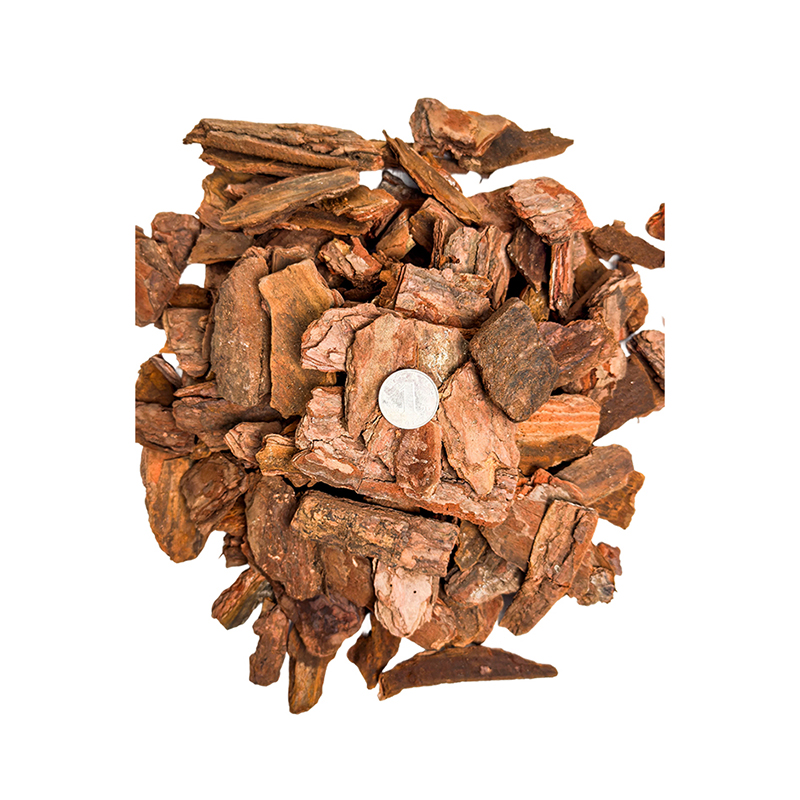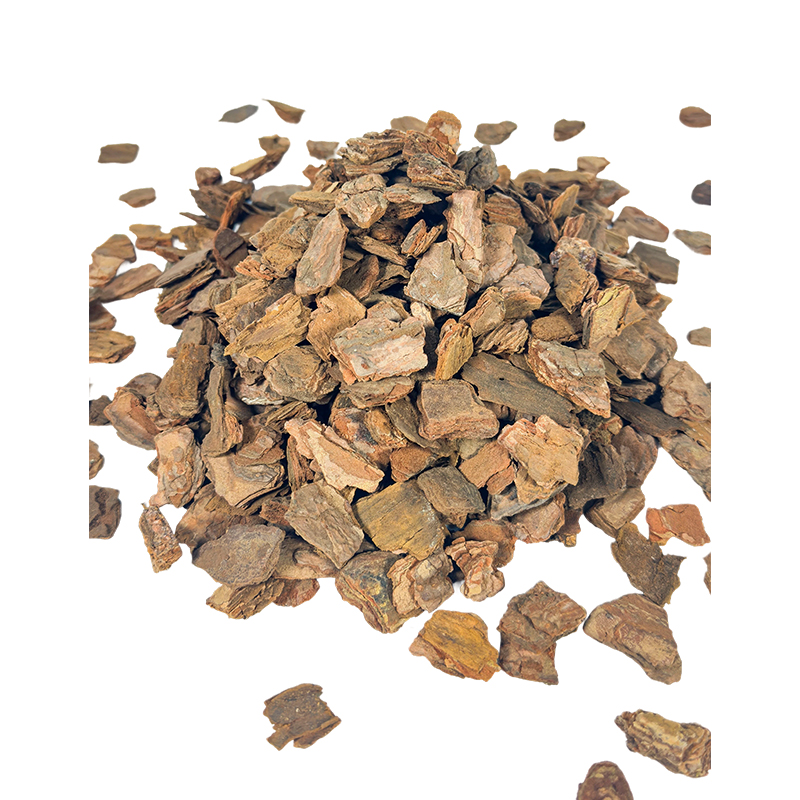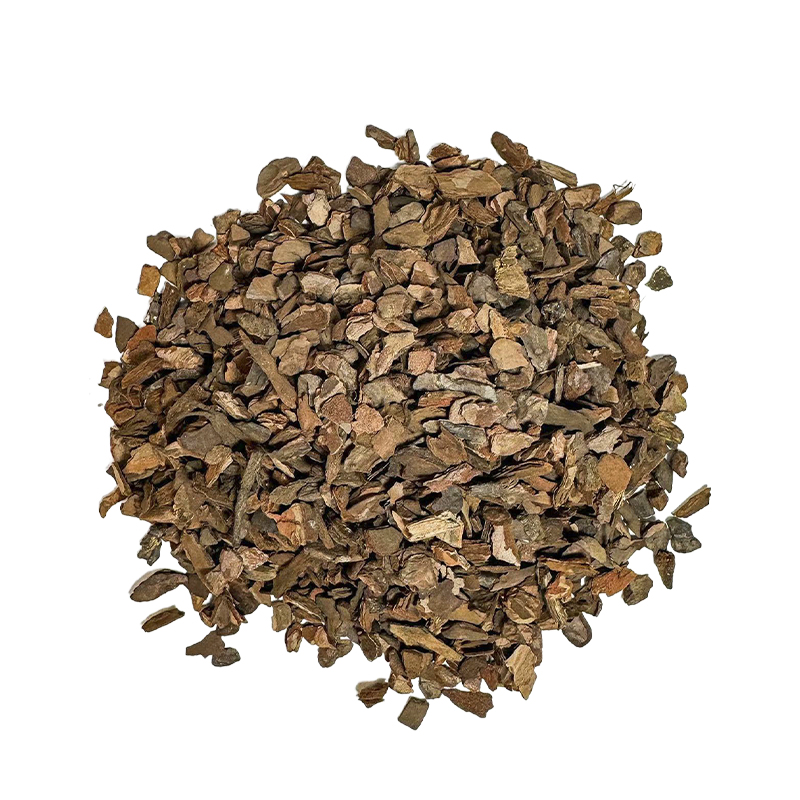How does temperature control affect the adsorption properties of biochar during pine bark pyrolysis?
Release Time : 2025-08-18
During the pyrolysis of pine bark to produce biochar, temperature control is a key factor in determining its adsorption properties. Biochar's adsorption capacity primarily depends on its internal pore structure and surface chemical properties, the formation and evolution of which are closely linked to temperature fluctuations during the pyrolysis process. Pyrolysis temperature not only alters the biochar's physical structure but also influences the type and number of surface functional groups, fundamentally determining its adsorption capacity and mechanism for various pollutants. Therefore, understanding how temperature control influences these key properties is crucial for optimizing biochar's adsorption performance.
At lower pyrolysis temperatures, the organic components in pine bark undergo limited decomposition, and the resulting biochar often retains many of the structural characteristics of the original material. At this stage, the biochar's pore structure is not yet fully developed, resulting in a relatively small number of pores with a complex pore size distribution, primarily consisting of micropores and mesopores, and a relatively low overall surface area. At the same time, because volatile components are not fully released at low temperatures, a large number of oxygen-containing functional groups, such as hydroxyl and carboxyl groups, remain on the biochar surface. These functional groups have a certain ability to adsorb polar pollutants through chemical reactions, but due to the limited pore structure, the overall adsorption capacity is generally low.
As the pyrolysis temperature gradually increases, components such as cellulose, hemicellulose, and lignin in the pine bark undergo deeper decomposition, releasing a large amount of volatile substances, creating space for the formation of pores within the biochar. During this process, the increase in temperature promotes pore expansion and interconnection, increasing the number of micropores and gradually achieving a reasonable ratio of mesopores to macropores, significantly increasing the specific surface area of the biochar. This optimized pore structure greatly enhances the biochar's physical adsorption capacity, allowing it to adsorb more pollutant molecules through capillary action and van der Waals forces within the pores. At this point, the biochar's adsorption performance begins to rapidly improve.
When the pyrolysis temperature reaches a higher level, the biochar's pore structure development enters a new stage, but excessively high temperatures may adversely affect the existing pore structure. Under high temperatures, the microcrystalline structure within biochar reorganizes. Some micropores may close due to excessive sintering, and mesopores may decrease due to structural collapse, resulting in a downward trend in specific surface area. However, during this stage, the surface functional groups of biochar undergo significant changes, with the number of oxygen-containing functional groups decreasing while the aromatic structure becomes more stable. This enhances the hydrophobicity of the biochar surface and may improve its adsorption capacity for non-polar pollutants.
The effect of pyrolysis temperature on the surface chemical properties of biochar is also reflected in the activity of the functional groups. Biochar formed at lower temperatures has a rich variety of surface functional groups and high activity, capable of binding to pollutants through chemical reactions such as ion exchange and complexation. This chemical adsorption exhibits high selectivity under certain conditions. As the temperature increases, the functional groups gradually decompose or transform, reducing the surface chemical activity of the biochar. However, the aromatic structure becomes more stable, making the adsorption of pollutants by the biochar more dependent on physical interactions. This type of adsorption generally has a wider range of applications and greater stability.
Temperature control also affects the surface charge characteristics of biochar, which indirectly affects its adsorption performance. The charge density and charge type on the biochar surface vary at different pyrolysis temperatures, which is closely related to the dissociation state of the surface functional groups. At lower temperatures, the presence of a large number of oxygen-containing functional groups generally imparts a more negative charge to the biochar surface, favoring the adsorption of positively charged pollutants. At higher temperatures, as the number of oxygen-containing functional groups decreases, the surface charge density decreases, making the adsorption of neutral or non-polar pollutants more pronounced. This shift in charge properties further expands biochar's adsorption applications.
Pyrolysis temperature comprehensively influences biochar's adsorption performance by regulating its pore structure, surface functional group composition, aromaticity, and surface charge characteristics. In practical applications, the pine bark pyrolysis temperature must be optimally controlled based on the properties of the target pollutants and the desired adsorption requirements to achieve the optimal match between the biochar's pore structure and chemical properties, thereby producing a biochar product with highly efficient adsorption performance. This dynamic balance between temperature and performance is the key to optimizing biochar preparation processes.







